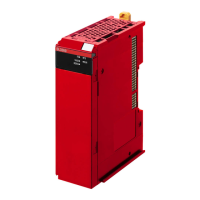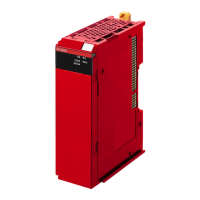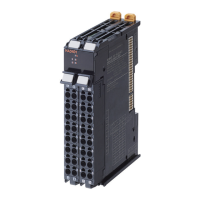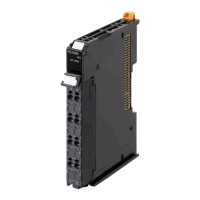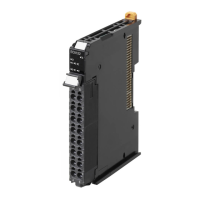The output words and input words for each node for which data is exchanged must be set in the con-
nection information. These words are called an output tag set and an input tag set, respectively. Each
tag set must contain at least one tag.
The size of data for data exchange is the total size of tags included in the tag set. The size of the out-
put tag set and the size of the input tag set must match.
Precautions for Correct Use
• Select the Use Option for the CIP message server of the EtherNet/IP port. If the Do not use
Option for the CIP message server is selected, tag data links cannot be performed. For the
details on the settings, refer to CIP Message Server on page 7-15.
•
If the Use Option is selected for Packet Filter of the EtherNet/IP port, make sure to permit
packets to be used for tag data links. If they are not permitted, tag data links are not possible.
For the details on the settings, refer to Packet Filter on page 7-7.
• During tag data link communications, data transfer between the CPU Unit and the X Bus Unit
is performed during I/O refresh of the primary periodic task. I/O refresh processing can be as-
signed to the priority-16 periodic task for each tag set in the settings for exclusive control of
variables in tasks. Refer to I/O Refreshing of X Bus Function Module in the NJ/NX-series
CPU Unit Software User’s Manual (Cat. No. W501) for details on task execution time and I/O
refreshing.
9-1-2
Data Link Data Areas
Tags
A tag is a unit that is used to exchange data with tag data links.
Data is exchanged between the local network variables and remote network variables specified in the
tags or between specified I/O memory areas.
Precautions for Correct Use
To maintain concurrency in the values of network variables that are assigned to tags, you must
set refreshing tasks.
Refer to 9-1-7 Concurrency of Tag Data Link Data
on page 9-12 for details.
Tag Sets
When a data link connection is established, one or more tags (up to eight tags including Controller sta-
tus) are configured as a collective set of tags for the connection. This is called a tag set. Each tag set
represents a unit of data for one tag data link connection.
Tag data links are therefore created through a connection between one tag set and another tag set. A
tag set name must be set for each tag set.
Note A connection is used to exchange data as a unit within which data concurrency is maintained.
Thus, data concurrency is maintained for all the data exchanged for one or more tags in one tag set.
Precautions for Correct Use
Data with tags is exchanged in the order that the tags are registered in the tag set. Register the
tags in the same order of the input and output tag sets.
9 Tag Data Link Functions
9-3
NX-series EtherNet/IP Unit User's Manual (W627)
9-1 Introduction to Tag Data Links
9
9-1-2 Data Link Data Areas
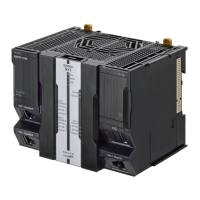
